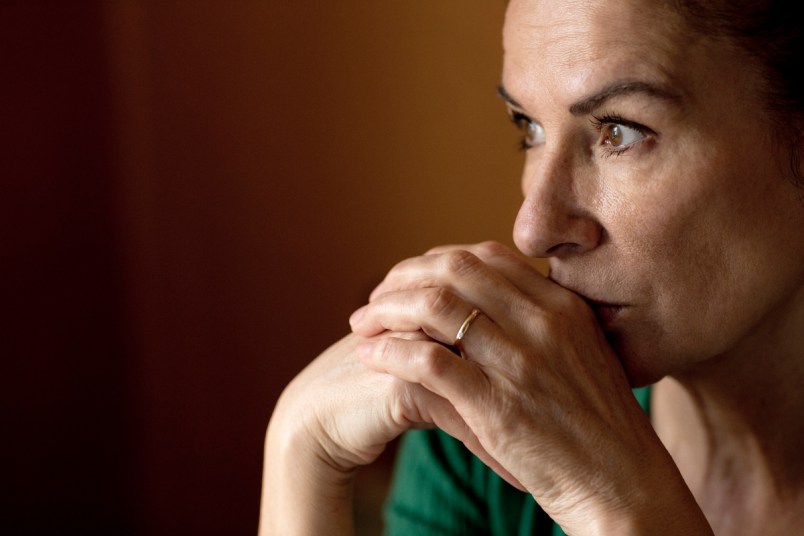Expert Advice: How Do I Stop Worrying All the Time?
Tricks to banish dread and embrace hope.

Women are more likely than men to feel worried, nervous, or anxious on a daily basis. It’s not surprising, given societal pressures and the incessant barrage of imagery showing airbrushed, wrinkle-free ladies with perfect hair and no problems. With all the pressure we’re under, it’s natural to fear the unknown and frequently feel imperfect. To the rescue: We asked three experts to share their insights on how to banish dread, embrace hope, and stop worrying so much.
Remember you’re not alone
When we’re overwhelmed with worry, it’s easy to feel like we’re the only one in the world struggling. But that’s the furthest thing from the truth. “The most underlined verse in the Bible is, ‘Be anxious for nothing,’” says pastor Max Lucado, Teaching Minister of Oak Hills Church in San Antonio and author of Anxious for Nothing. “Just knowing that what you’re feeling is nearly universal helps you open up to greater optimism.”
Name your fears
When worries are vague, they’re extra scary — that’s why it’s helpful to articulate them as concretely as possible, urges Shauna Shapiro, PhD, clinical psychologist, self-compassion researcher, and author of Good Morning, I Love You. “First, bring your attention to your physical sensations, be it a tightness in your chest or a churning in your belly, because your emotions live in your body,” she advises.
Then when you feel dread rising up, give voice to it, as in: “I’m worried about seeing my sister for the first time since we had an argument.” Once we say them aloud, worries lose much of their power, allowing us to feel more grounded in the moment.
Lift your worries up
After you’ve discovered what’s making you tense, consider praying about it to the higher power you believe in, encourages Lucado, “You might say: ‘I’m worried about my 2 o’clock meeting with a co-worker I don’t get along with.’ This way, the next time that worry arises, you’ll be able to tell yourself, ‘I already gave that up to God,’ and you can go about your day in peace.”
Look to the future
“You’re only worried when you care deeply about something,” says Tracy Dennis-Tiwary, PhD, a clinical psychologist, Director of the Emotion Regulation Lab at Hunter College, and author of Future Tense: Why Anxiety is Good for You (Even Though it Feels Bad). “Ask yourself, ‘What does this mean I’m hoping for?’” This question is taming Dennis-Tiwary’s own fear as she prepares to move out of the home she’s lived in for 20 years. “It’s nerve-wracking, but my anxiety focuses me on what I want from the move: to meet new people and try new things. We can use worry to propel us forward.”
Create a ‘worry box’
Our thoughts tend to race at night, in part because that’s when we feel most vulnerable, says Dennis-Tiwary. “Keep a pen and pad on your nightstand and jot down worries so you can problem-solve in the morning by planning one small step.” Some folks even have “worry boxes,” in which they tuck away their pad. “Closing the lid shuts the door on worries until you’re ready to address them.”
Send out loving kindness
One of the best ways to dial down fear is to look beyond ourselves, observes Shapiro. “I was just working with a woman who has breast cancer, and nothing we tried curbed her worry,” she recalls. “But then I asked her to imagine all the women in the world with breast cancer, and to send them healing thoughts — this finally shifted things for her.” Indeed, connecting with others — through prayer, visualization, or in-person, by reaching out to loved ones — is the most powerful way to ignite hope.
A version of this article originally appeared in our print magazine, Woman’s World.












